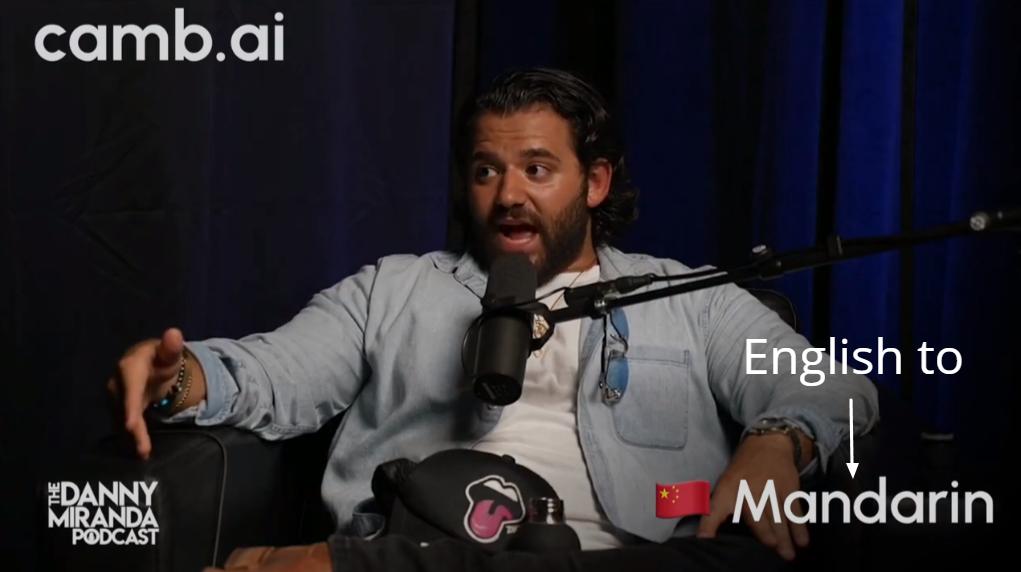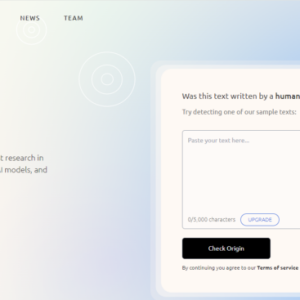In the fast-paced digital era, podcasting has emerged as a popular medium for disseminating information, sharing stories, and engaging with a wide audience. However, as the podcasting landscape continues to evolve, a new technology is set to revolutionize the way we consume audio content: Spotify AI Voice Translations. This groundbreaking innovation by Spotify aims to bridge language barriers and enhance accessibility by seamlessly translating podcasts into different languages through the power of artificial intelligence. With Spotify AI Voice Translations, the next generation of podcasting is poised to break down linguistic boundaries, foster global connections, and create a more inclusive audio experience for listeners worldwide.
- 12 Best Generative AI Tools That Will Change How You Work Forever
- ChatGPT for Brainstorming: 5 Powerful Ways to Harness AI For New Ideas
- Wordtune Review | Pros, Cons, Alternatives, and Pricing
- Jasper vs Copy AI – Which is Better for Generating AI Content That Ranks?
- 9 Top Copywriting Generators to Help Scale Your Sales Copy
The digital space is forever evolving, with technology becoming the backbone of most innovations. Among the giants that have steered significant technological advancements, Spotify stands tall.
You are viewing: Spotify AI Voice Translations: The Next Gen of Podcasting
Recently, an exciting feature caught the attention of tech enthusiasts and podcasters alike: Spotify AI voice translations.
In this post, we’ll talk about the nature of the new update from Spotify as well as how it affects podcasters and listeners. We’ll also talk about new players who are entering the scene with the sole intent of helping content creators localize their spoken content more easily.
Spotlight on Spotify’s AI Voice Translations
Gone are the days when the scope of podcasting was limited by language barriers. With Spotify’s AI voice translations, podcasts can transcend borders.
Whether a listener is in Delhi, Nairobi, Paris, Berlin, Rio or Madrid, they can tune in to their favorite English-speaking podcasts and experience them in their same voice, only in Hindi, Swahili, French, German, Portuguese or Spanish (and numerous other languages).
Many tech aficionados first caught wind of it through major publications like TechCrunch. But beyond the tech circles, what does this advancement mean?
For the creators, this means their voice, message and insights can resonate globally, unhindered by language. They can now truly envision a global audience hanging on to their every word. For listeners, it’s a treasure trove of content now accessible in their native dialect, enriching their podcasting experience manifold.
The Impact of Voice Translations
Historically, video content, with its visual elements, was superior, providing an inclusive experience to its audience. However, the dawn of AI voice translations, especially in audio-centric platforms like Spotify, has redefined this narrative.
Breaking Language Boundaries
See more : 11 Midjourney Alternatives That Will Help Expand Your AI Creativity
Spotify’s focus on audio is strategic, tapping into an avenue that seamlessly integrates AI voice translations. By doing so, it’s unlocked a global playground for podcasts, making language inconsequential. Think about the potential:
- Democratizing Information: A podcast exploring the intricacies of genetic engineering, previously available only to English speakers, can now educate someone in Seoul, Berlin or Buenos Aires in their mother tongue.
- Global Reach: Content creators can now envision a truly international audience, transcending geographical and linguistic limitations.
- Cultural Exchange: A chance for listeners worldwide to indulge in diverse topics, fostering global understanding and appreciation.
The Broader Ecosystem Beyond Spotify
Spotify’s innovation is just the tip of the iceberg in the expansive digital content sea. Other platforms, notably Camb.ai, are not far behind. They’ve ventured into this space, introducing their distinct offerings and, in some cases, blending audio translations with visual adaptations.
In Camb.ai’s case, editors can upload a video file to the platform, specify the starting language and designate any eligible target languages.
This example took an episode of the Danny Miranda podcast (which is normally in English) and adapted it into German, Portuguese and Chinese Mandarin:

This convergence of sight and sound, ensuring that visual elements sync with audio elements, sets the stage for future advancements in digital media.
In the same vein, KUDO’s AI Translator also boasts a wide range of applicable languages it can translate using AI, as well as certain modes of sign language:

It even features functionality that equips virtual meeting participants with the means to translate spoken words in one language directly into their preferred language right on the spot:
The Business Side of AI Translations
From a business standpoint, why are companies, including Spotify, rushing to offer these tools — often for free? The logic is simple: These platforms thrive on content. By offering tools that enable creators to cater to a broader audience, they indirectly encourage more content generation.
See more : ChatGPT for Lawyers: How Can This AI Tool Help Improve Your Effectiveness?
More content leads to higher listenership or viewership, leading to an increase in platform traffic. This uptick in traffic translates to more ad impressions and, consequently, higher ad revenues.
Moreover, the strategy of offering valuable tools for free, often termed as Product Led Growth (PLG), isn’t new. By providing essential products at no cost, platforms ensure that creators remain loyal to their ecosystem. This approach, while seemingly generous, is a strategic move to boost user retention and engagement.
The Takeaway: Try expanding the reach of your audible content with AI translation. Although it may still have some rough edges, with some languages not perfectly transitioning the spoken content, it’s fast becoming a very useful tool in maximizing the utility of your content.
Last Thoughts on Spotify AI
Spotify’s AI voice translations signify a significant shift in the podcasting landscape. As technology continues to push boundaries, it’s evident that the world is moving towards a more inclusive and interconnected digital future.
Platforms are recognizing the importance of eliminating language barriers, and in doing so, they’re not only promoting global content but also fostering a sense of unity among listeners worldwide.
In the coming years, it wouldn’t be surprising to see more platforms jump on this bandwagon, offering even more advanced tools to creators.
But for now, one thing is clear: With features like AI voice translations, the world of podcasting is set for a revolution. And who knows? Perhaps soon, the dream of a universally accessible digital content space in any language might just become a reality.
For more insights and lessons about marketing, check out our Marketing School podcast on YouTube.
That’s a wrap on “Spotify AI Voice Translations: The Next Gen of Podcasting” We hope you’ve found a trove of useful insights and fresh perspectives. Your opinions and ideas matter to us—join the conversation below and share your take! Hungry for more tech insights? Dive into our diverse collection of articles where innovation meets practicality. Discover More AI Softwares.
Stay in the loop with the latest in AI and tech – your journey into the digital future continues at hiddenshard.com.
#Spotify #Voice #Translations #Gen #Podcasting
Source: https://hiddenshard.com
Category: AI





